
Dingle: A Charming Coastal Gem
Discover Dingle: A coastal haven in County Kerry, Ireland, where vibrant culture, stunning landscapes, and rich history await. Explore the beauty and charm of this unique destination.
Dingle, located on the rugged southwest coast of Ireland, is a picturesque town known for its vibrant culture and stunning landscapes. Nestled in County Kerry, this charming destination offers a mix of natural beauty, rich history, and warm hospitality that captivates every visitor. The town itself is a delightful blend of colorful buildings, traditional pubs, and quaint shops. Strolling through the narrow streets, you'll find yourself immersed in a lively atmosphere, often accompanied by the sounds of live Irish music. Dingle's harbor is bustling with activity, as fishing boats come and go, adding to the town's authentic maritime charm. Nature enthusiasts will be thrilled by the breathtaking scenery that surrounds Dingle. The Dingle Peninsula is home to some of Ireland's most stunning coastal views, with dramatic cliffs, sandy beaches, and lush green hills. The iconic Slea Head Drive offers a scenic route that showcases the peninsula's natural beauty, with plenty of photo opportunities along the way. For history buffs, Dingle has a rich heritage waiting to be explored. The area is dotted with ancient sites, including the Gallarus Oratory, a remarkable stone church dating back to the early Christian period. The Blasket Islands, just off the coast, offer a glimpse into the traditional way of life that once thrived in this remote part of Ireland. Foodies will also find much to love in Dingle. The town boasts a vibrant culinary scene, with an emphasis on fresh, locally sourced ingredients. Seafood is a highlight, with many restaurants serving up delicious dishes featuring the catch of the day. Don't miss the chance to sample some of the town's famous seafood chowder or indulge in a scoop of creamy Dingle ice cream.
Local tips in Dingle
- Visit during the Dingle Food Festival in October to experience local cuisine and vibrant food markets.
- Take a boat tour to see Fungie the dolphin, a beloved local resident known for his playful antics.
- Wear comfortable walking shoes for exploring the town and surrounding natural trails.
- Plan a visit to the Dingle Distillery for a taste of locally crafted whiskey and gin.
- Bring layers of clothing as the coastal weather can be unpredictable, with sudden changes in temperature and wind.
Dingle: A Charming Coastal Gem
Dingle, located on the rugged southwest coast of Ireland, is a picturesque town known for its vibrant culture and stunning landscapes. Nestled in County Kerry, this charming destination offers a mix of natural beauty, rich history, and warm hospitality that captivates every visitor. The town itself is a delightful blend of colorful buildings, traditional pubs, and quaint shops. Strolling through the narrow streets, you'll find yourself immersed in a lively atmosphere, often accompanied by the sounds of live Irish music. Dingle's harbor is bustling with activity, as fishing boats come and go, adding to the town's authentic maritime charm. Nature enthusiasts will be thrilled by the breathtaking scenery that surrounds Dingle. The Dingle Peninsula is home to some of Ireland's most stunning coastal views, with dramatic cliffs, sandy beaches, and lush green hills. The iconic Slea Head Drive offers a scenic route that showcases the peninsula's natural beauty, with plenty of photo opportunities along the way. For history buffs, Dingle has a rich heritage waiting to be explored. The area is dotted with ancient sites, including the Gallarus Oratory, a remarkable stone church dating back to the early Christian period. The Blasket Islands, just off the coast, offer a glimpse into the traditional way of life that once thrived in this remote part of Ireland. Foodies will also find much to love in Dingle. The town boasts a vibrant culinary scene, with an emphasis on fresh, locally sourced ingredients. Seafood is a highlight, with many restaurants serving up delicious dishes featuring the catch of the day. Don't miss the chance to sample some of the town's famous seafood chowder or indulge in a scoop of creamy Dingle ice cream.
When is the best time to go to Dingle?
Iconic landmarks you can’t miss
Dingle Oceanworld Aquarium
Experience the magic of marine life at Dingle Oceanworld Aquarium, a family-friendly attraction showcasing penguins, sharks, and vibrant sea creatures.
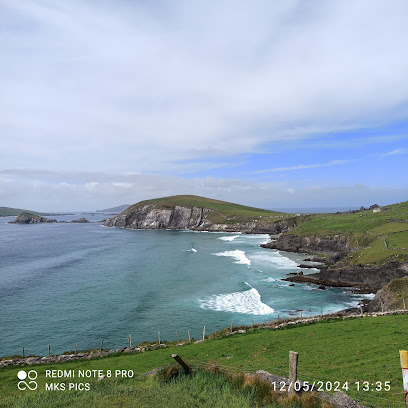
Dick Mack's Pub
Experience the charm of Ireland at Dick Mack's Pub in Dingle, where traditional hospitality, local brews, and live music come together.
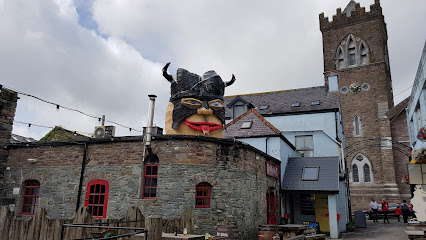
Dingle Dolphin Boat Tours
Experience the magic of the Dingle Peninsula with unforgettable dolphin boat tours, exploring Ireland's stunning marine wildlife and breathtaking coastal scenery.
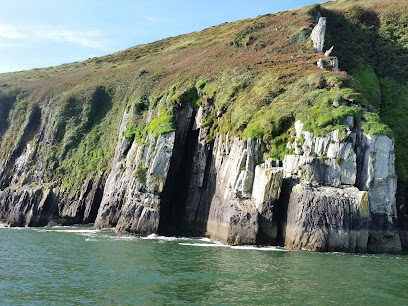
Murphy's Pub, Bed & Breakfast
Discover the charm of Dingle at Murphy's Pub, Bed & Breakfast, where traditional Irish hospitality meets cozy comfort and local cuisine.

Murphys Ice Cream
Experience the unique flavors of Ireland with artisanal ice cream at Murphys in Dingle, a delightful treat for tourists and locals alike.
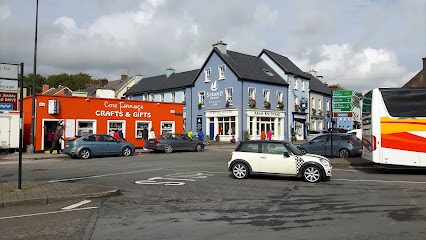
Out of the Blue
Experience the best of Dingle's seafood at Out of the Blue, where fresh catches meet warm hospitality in a charming coastal setting.
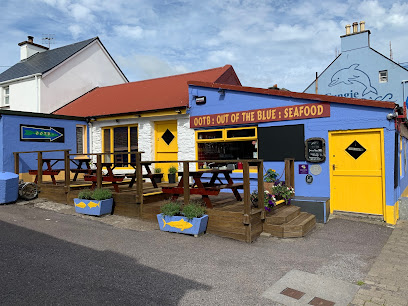
Paul Geaney's Bar & Restaurant
Discover the heart of Dingle at Paul Geaney's Bar & Restaurant, where traditional Irish cuisine meets warm hospitality in a lively atmosphere.
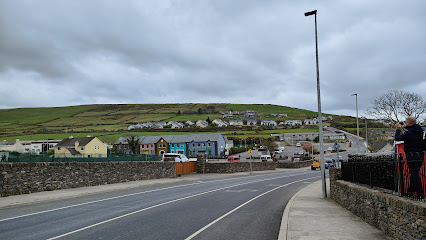
The Boatyard Restaurant
Experience the best of Dingle's coastal cuisine at The Boatyard Restaurant, where fresh seafood meets stunning harbor views.
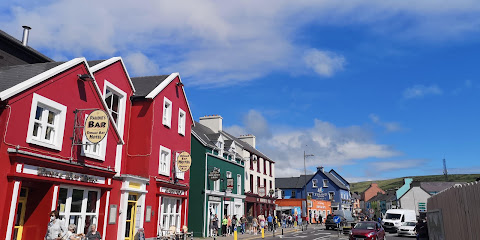
Dingle Sea Safari
Explore the breathtaking beauty of Ireland's coastline with Dingle Sea Safari, where adventure and nature unite in unforgettable marine experiences.
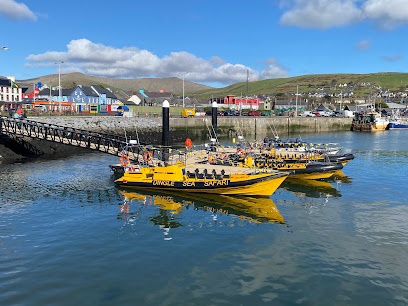
Danno's Restaurant & Bar
Experience the essence of Irish cuisine at Danno's Restaurant & Bar in Dingle, where grilled specialties meet local hospitality.
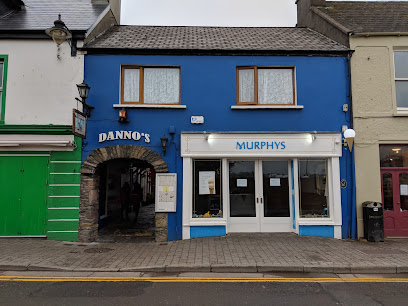
An Droichead Beag
Experience the heart of Dingle at An Droichead Beag, where local brews and traditional Irish cuisine come together in a cozy, inviting atmosphere.
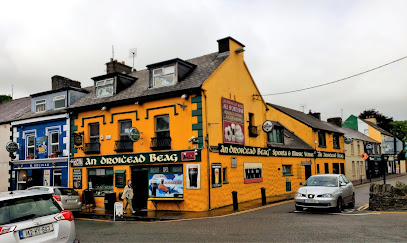
Conor Pass waterfall
Experience the breathtaking beauty of Conor Pass Waterfall in County Kerry, a perfect natural retreat for nature lovers and adventurers alike.
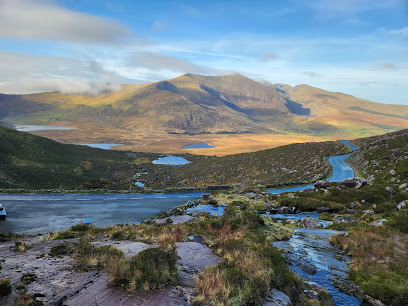
O'Sullivan's Courthouse Pub
Discover the charm of O'Sullivan's Courthouse Pub in Dingle, where hearty Irish cuisine meets lively music in a warm, inviting atmosphere.
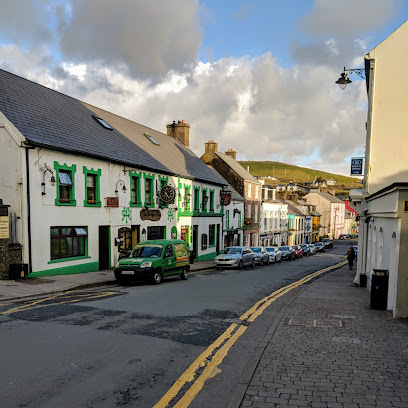
Dingle Boat Tours
Experience Dingle's breathtaking coastline with unforgettable boat tours, including fishing, whale watching, and sightseeing adventures.
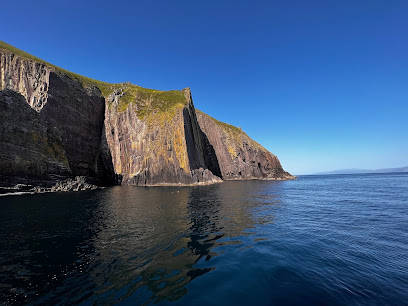
Fairy Fort Ringfort
Discover the magical Fairy Fort Ringfort in Dingle, Co. Kerry, a captivating archaeological site steeped in Irish history and folklore.
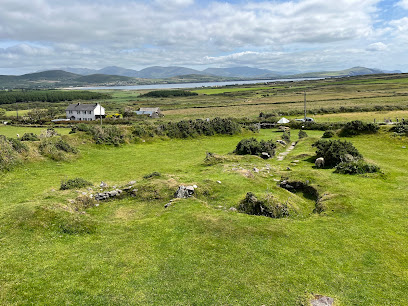
Unmissable attractions to see
Kerry Cliffs (Aillte Chiarraí)
Explore the breathtaking Kerry Cliffs along the Skellig Ring, where stunning coastal views and dramatic landscapes await you in County Kerry, Ireland.

An Chonair / Conor Pass
Discover the breathtaking beauty of An Chonair / Conor Pass in County Kerry, Ireland, where stunning landscapes meet rich history and adventure.
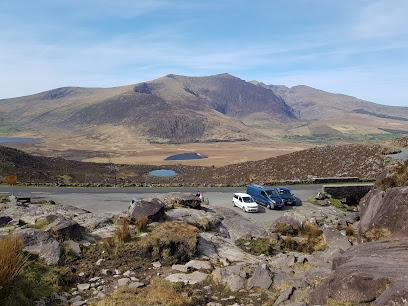
Coumeenoole Beach
Explore the natural beauty of Coumeenoole Beach, a hidden gem on the Dingle Peninsula, offering stunning views and serene landscapes perfect for relaxation.

Kate Kearneys Cottage
Discover the charm of Kate Kearney's Cottage in the stunning Gap of Dunloe, where tradition meets breathtaking landscapes in Killarney, County Kerry.
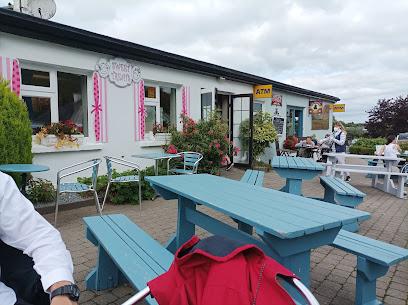
Cé Dhún Chaoin / Dunquin Pier
Experience the stunning natural beauty of Cé Dhún Chaoin / Dunquin Pier in County Kerry, a breathtaking scenic spot with panoramic ocean views.
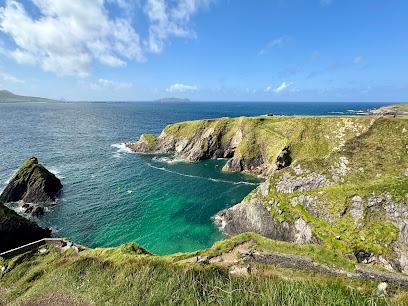
Dingle Dolphin Boat Tours
Experience the magic of Dingle Bay with captivating dolphin encounters and scenic boat tours amidst breathtaking coastal landscapes.
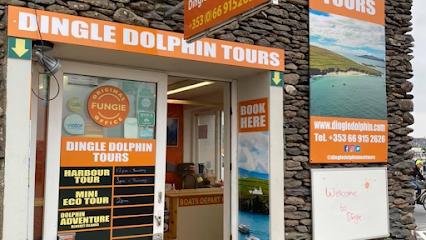
The Kerry Bog Village Museum
Discover the rich heritage of rural Ireland at The Kerry Bog Village Museum, an immersive experience showcasing the history of peat harvesting in County Kerry.
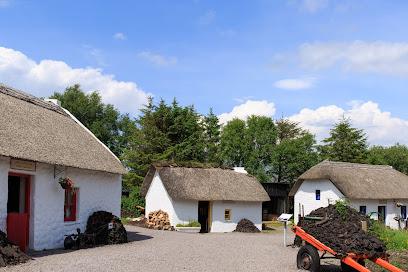
Dingle Peninsula
Explore the breathtaking Dingle Peninsula in Co. Kerry, Ireland; a stunning blend of rugged coastline, vibrant culture, and rich history awaits you.
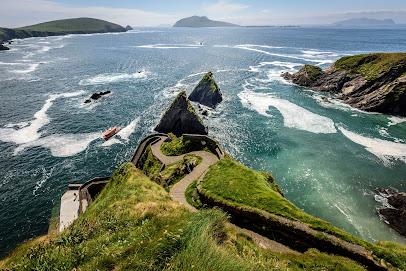
Com an Chiste Ring of Kerry Lookout and Car Park
Discover the stunning vistas at Com an Chiste Lookout in Co. Kerry, a perfect spot for nature lovers and photographers along the Ring of Kerry.
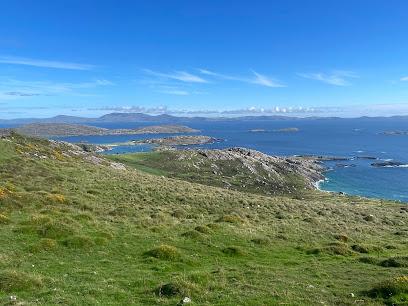
Cahergal Stone Fort
Discover the historic charm of Cahergal Stone Fort in Co. Kerry, a captivating attraction that showcases Ireland's rich heritage amidst stunning landscapes.

Foxy John's
Experience the heart of Dingle at Foxy John's, an iconic Irish pub offering local brews, authentic cuisine, and lively music in a charming setting.
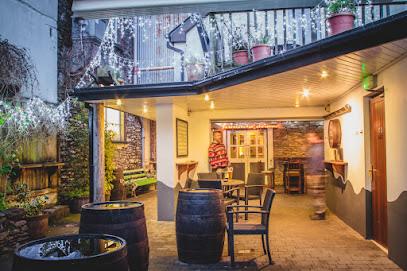
Skellig Michael Tours - Skellig Michael Landing Tours and Boat Tours - Casey's Skellig Island Tours
Explore the breathtaking Skellig Michael with Casey's Tours, a UNESCO World Heritage site known for its stunning beauty and rich history.

Valentia Island Lighthouse
Explore the Valentia Island Lighthouse, a historic gem with breathtaking ocean views and rich maritime heritage on Ireland's picturesque Valentia Island.
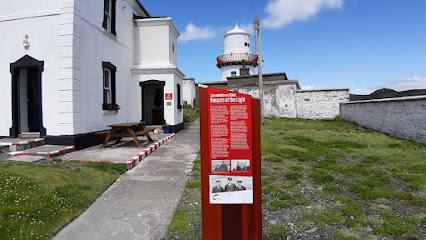
Derrynane House
Explore the historic Derrynane House in County Kerry, a national museum celebrating Irish heritage amidst breathtaking coastal scenery.
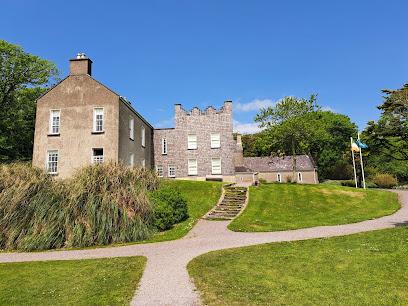
Ballinskelligs Beach
Discover Ballinskelligs Beach, a serene coastal haven in County Kerry, where golden sands meet stunning cliffs and rich local culture awaits.
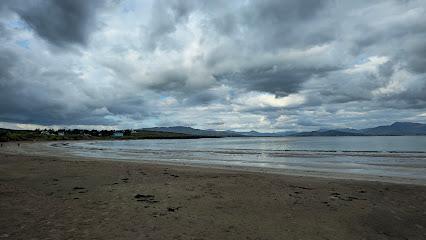
Essential places to dine
The Fish Box / Flannery's Seafood Bar
Experience the freshest seafood in Dingle at The Fish Box - where local flavors meet coastal charm.
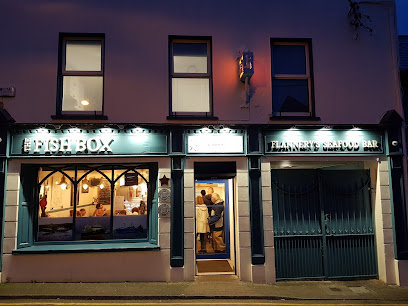
Dick Mack's Pub
Experience the authentic spirit of Ireland at Dick Mack's Pub in Dingle - where craft beer meets rich heritage.
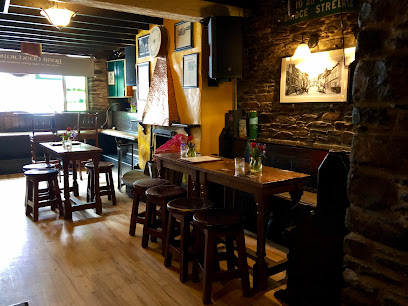
The Dingle Pub
Discover authentic Irish culture at The Dingle Pub with delightful food and lively music in the heart of Co. Kerry.

Murphy's Pub, Bed & Breakfast
Discover the charm of Dingle at Murphy's Pub & B&B - where traditional Irish hospitality meets modern comfort.
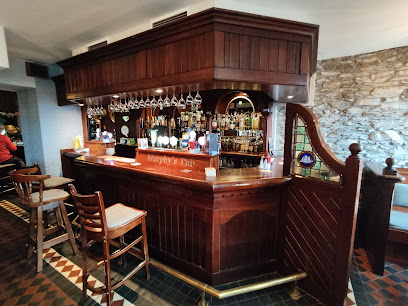
John Benny's Pub
Discover the essence of Irish culture at John Benny's Pub in Dingle—where great food meets live music in a warm atmosphere.
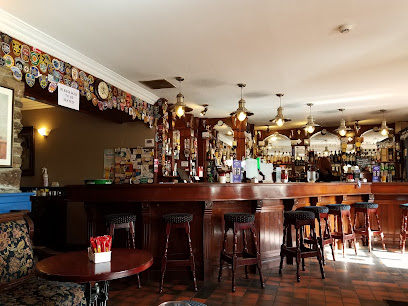
Out of the Blue
Experience unparalleled seafood dining at Out of the Blue in Dingle - where freshness meets tradition in every bite.

Paul Geaney's Bar & Restaurant
Discover authentic Irish flavors at Paul Geaney's Bar & Restaurant in Dingle – where every meal is a celebration of local ingredients.
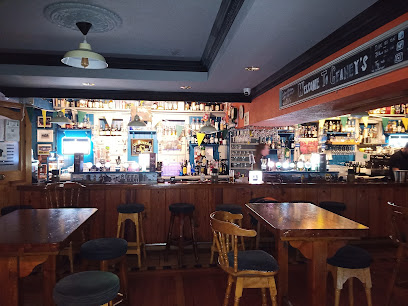
The Boatyard Restaurant
Experience exquisite seafood dining in Dingle at The Boatyard Restaurant—where fresh flavors meet breathtaking views.
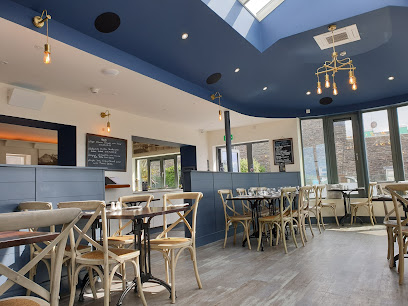
James Long Gastro Pub
Experience the taste of Ireland at James Long Gastro Pub in Dingle - where tradition meets flavor in a cozy atmosphere.

Marina Inn
Discover authentic Irish cuisine and hospitality at Marina Inn in Dingle - where every meal is an experience.
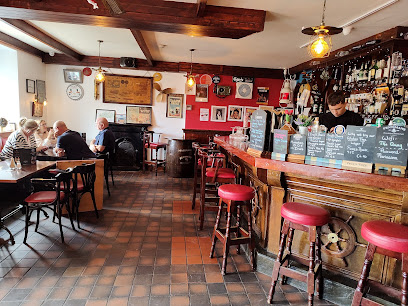
The Dingle Diner
Discover The Dingle Diner: Your gateway to authentic Irish comfort food in the heart of scenic Dingle.
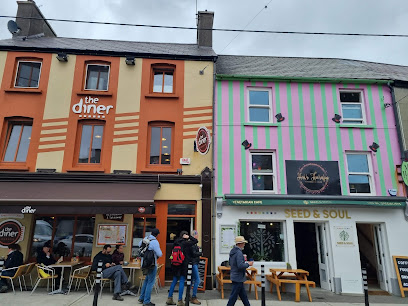
Danno's Restaurant & Bar
Discover authentic Irish cuisine at Danno's Restaurant & Bar in Dingle—where every meal is a celebration of local flavors.
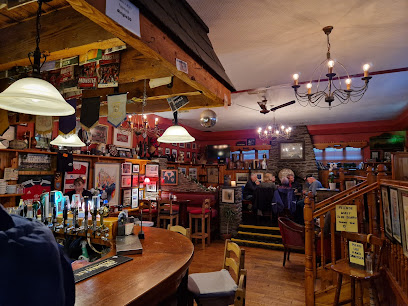
Harrington's Restaurant
Experience the essence of Ireland at Harrington's Restaurant with authentic dishes crafted from local ingredients in the heart of Dingle.
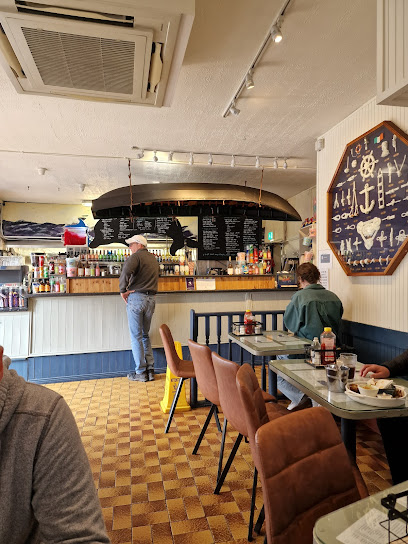
Dingle Bay Hotel
Discover unmatched hospitality at Dingle Bay Hotel - where comfort meets stunning coastal views in picturesque Dingle.
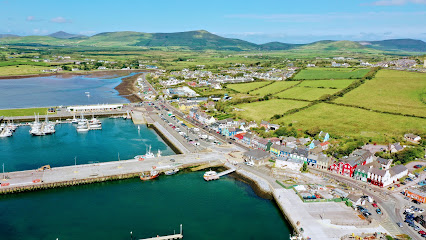
Doyle's Seafood Restaurant Dingle Ireland
Experience authentic Irish seafood at Doyle's Seafood Restaurant in Dingle – where freshness meets tradition.
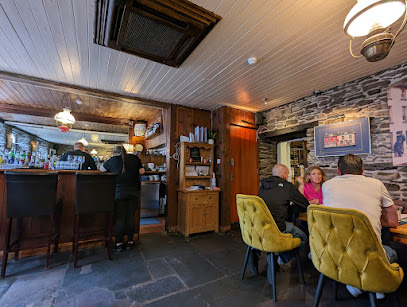
Markets, malls and hidden boutiques
Garvey's SuperValu Dingle
Explore Garvey's SuperValu Dingle for fresh local produce, artisanal baked goods, and a taste of authentic Irish culinary delights.
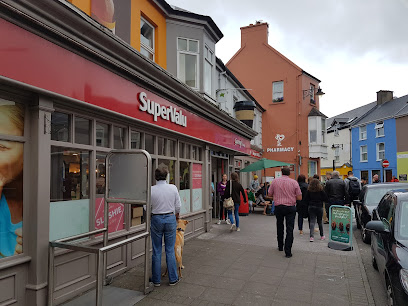
Lidl
Discover the best of Irish groceries and local treats at Lidl in Dingle, your go-to supermarket for quality and value.
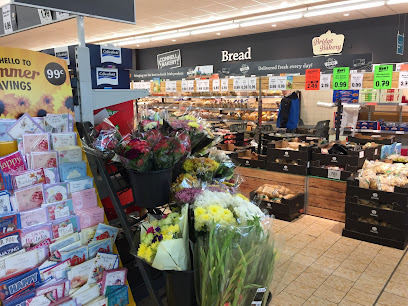
Strand House Dingle
Explore Strand House Dingle for unique clothing that reflects the charm of Co. Kerry's vibrant culture and stunning landscapes.
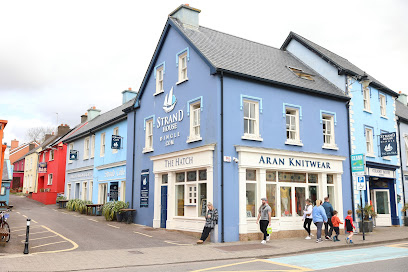
The Little Cheese Shop
Discover the rich flavors of Irish cheese at The Little Cheese Shop in Dingle, a must-visit for culinary enthusiasts and tourists alike.
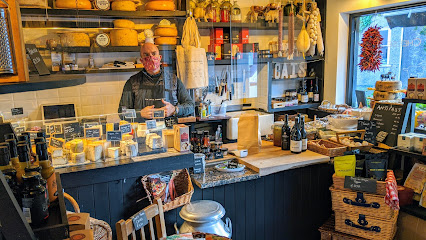
OUTWEST Clothing
Discover OUTWEST Clothing in Dingle for premium outdoor apparel, local designs, and expert advice on exploring Ireland's stunning landscapes.
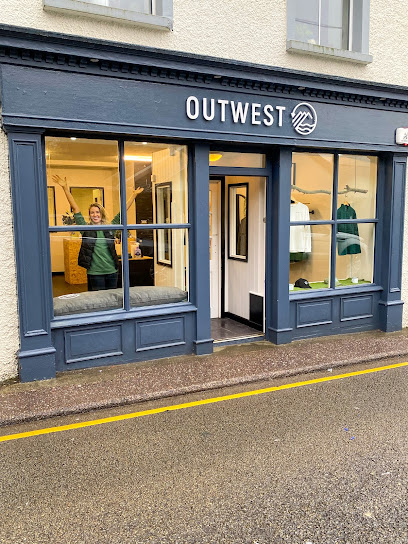
Dingle Bookshop
Explore a literary treasure trove at Dingle Bookshop, a cozy haven for book lovers in the heart of Dingle, Ireland.
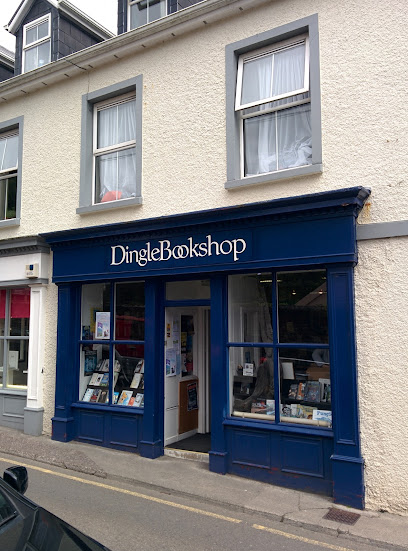
Dingle Crystal
Discover the artistry of hand-cut crystal at Dingle Crystal, a unique craft store in the heart of Dingle, Co. Kerry, celebrating Irish heritage.
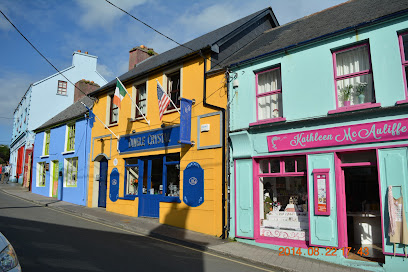
UNIQUE IRELAND PHONE & GIFT SHOP
Explore the Unique Ireland Phone & Gift Shop in Dingle for the best in mobile connectivity and authentic Irish gifts.
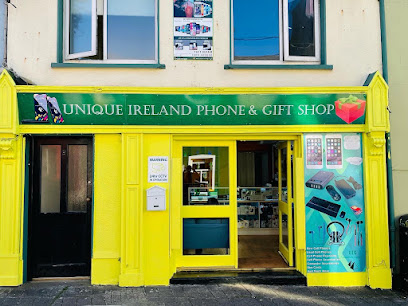
Morans Supermarket
Discover the best local flavors at Morans Supermarket, your essential shopping destination in Dingle, County Kerry.
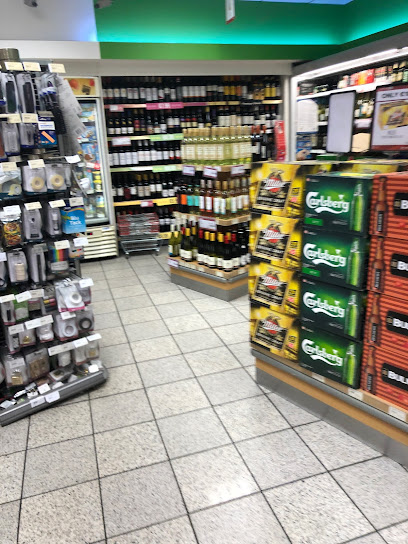
The Dingle Woollen Company - Gift/Knitwear Shop
Explore authentic Irish gifts and exquisite knitwear at The Dingle Woollen Company, your go-to shop in Dingle, Co. Kerry.
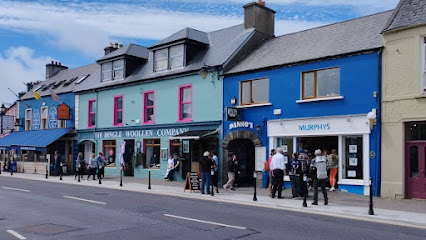
Kathleen McAuliffe
Discover unique fashion accessories at Kathleen McAuliffe in Dingle, Co. Kerry - a must-visit for style-savvy travelers.
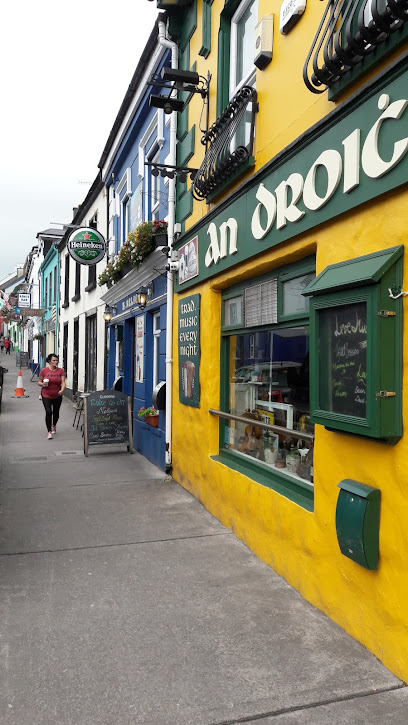
Centra Dingle
Explore the charm of Dingle at Centra, your go-to convenience store for local treats, essentials, and delicious takeaways in the heart of Co. Kerry.
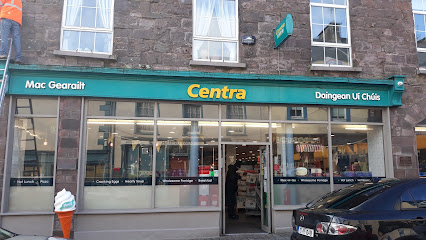
Dingle Record Shop
Explore the heart of Dingle's music scene at Dingle Record Shop, where vinyl treasures and local tunes await every music lover.
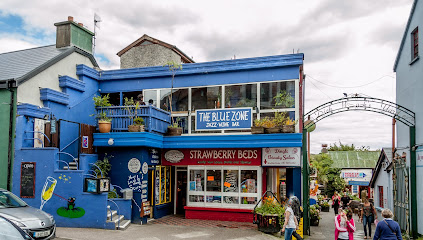
The Coach House
Discover unique Irish craftsmanship at The Coach House in Dingle, where interior design meets a charming gift shop.

The Dolphin Shop
Discover unique treasures at The Dolphin Shop in Dingle, where every souvenir tells a story and captures the spirit of Ireland.
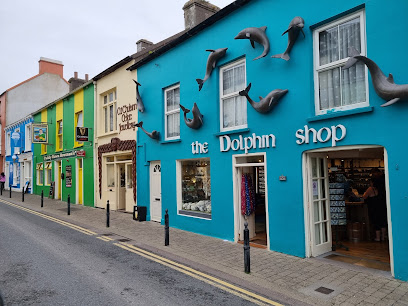
Essential bars & hidden hideouts
Dick Mack's Pub
Experience authentic Irish culture at Dick Mack's Pub in Dingle, where local brews and vibrant music create unforgettable memories.
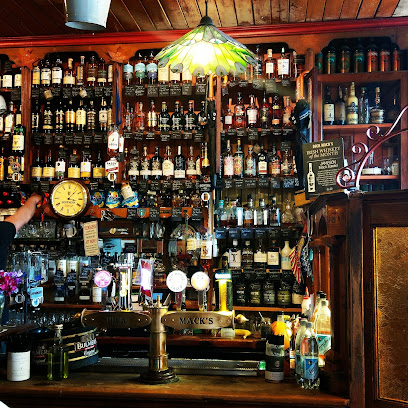
The Dingle Pub
Experience the warmth of Irish hospitality at The Dingle Pub, where traditional music and hearty cuisine create unforgettable moments.
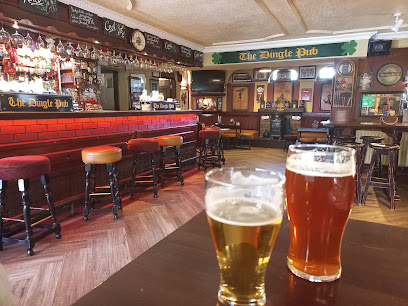
Foxy John's
Discover the unique charm of Foxy John's, a historic pub in Dingle offering delicious food, local brews, and vibrant live music.
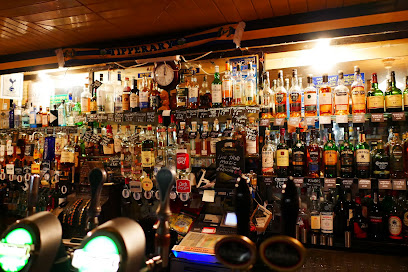
John Benny's Pub
Discover the heart of Dingle's nightlife at John Benny's Pub, where delicious food, local brews, and live music await.
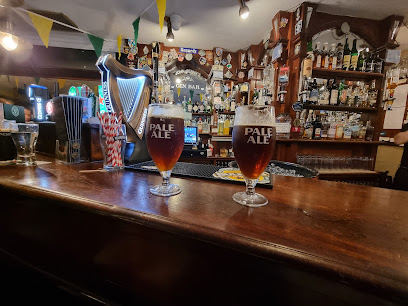
Paul Geaney's Bar & Restaurant
Discover the heart of Dingle at Paul Geaney's Bar & Restaurant, where Irish hospitality meets delicious grill cuisine.

James Long Gastro Pub
Experience the best of Dingle's local cuisine at James Long Gastro Pub, where fresh flavors meet a warm Irish welcome in a vibrant setting.
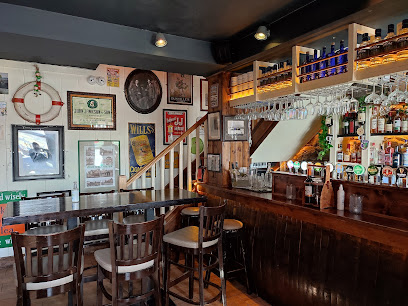
Marina Inn
Discover the heart of Dingle at Marina Inn, where traditional Irish cuisine meets warm hospitality in a lively pub atmosphere.
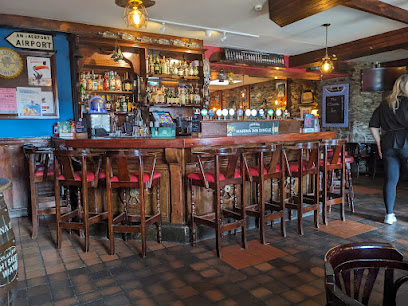
Danno's Restaurant & Bar
Experience the best of Irish cuisine at Danno's Restaurant & Bar, where local flavors meet a warm, inviting atmosphere in Dingle.
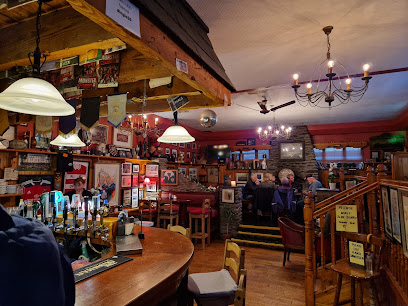
An Droichead Beag
Discover An Droichead Beag, a lively Dingle pub known for local brews, delicious fare, and captivating live music that embodies the spirit of Ireland.
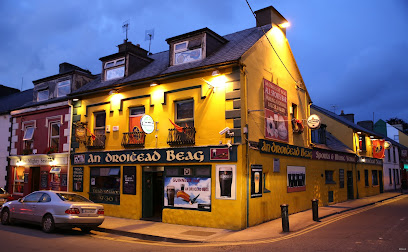
O'Flaherty's Bar
Experience authentic Irish hospitality at O'Flaherty's Bar in Dingle, where great drinks and live music create unforgettable memories.
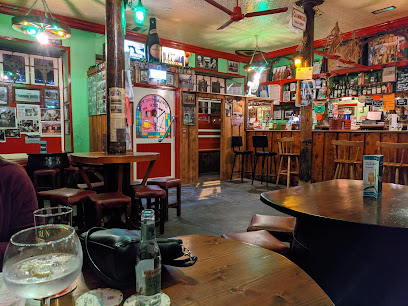
O'Sullivan's Courthouse Pub
O'Sullivan's Courthouse Pub in Dingle: A delightful blend of authentic Irish culture, live music, and hearty fare in a welcoming atmosphere.
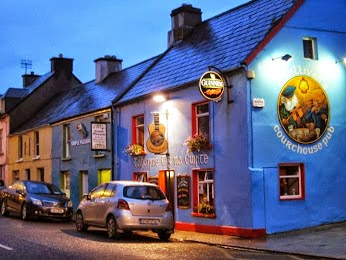
Paudie's Bar
Discover the heart of Dingle at Paudie's Bar, where traditional Irish charm meets modern hospitality in a vibrant setting.
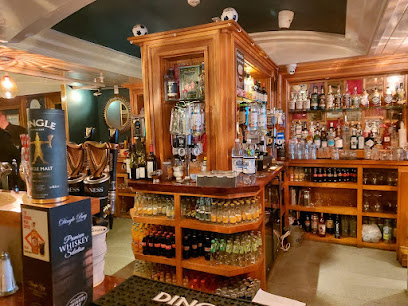
Curran's
Experience the charm of Curran's Pub in Dingle, where traditional Irish hospitality meets delicious food and lively music.

Neligan's Bar
Discover the heart of Dingle at Neligan's Bar, where Irish culture, friendly faces, and great drinks come together in a warm and inviting atmosphere.

Bob Griffin’s Bar Dingle
Discover Bob Griffin’s Bar: A vibrant Irish bar in Dingle with a fantastic beer garden and a welcoming atmosphere perfect for tourists.
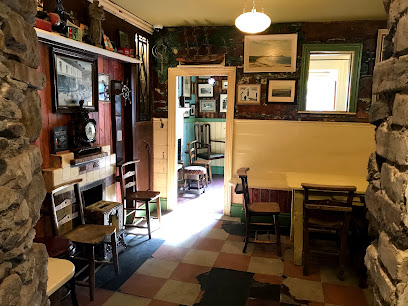
Local Phrases
-
- HelloDia dhuit
[dee-uh gwitch] - GoodbyeSlán
[slawn] - YesTá
[taw] - NoNíl
[neel] - Please/You're welcomeLe do thoil
[leh duh hull] - Thank youGo raibh maith agat
[gur-uv mah ag-ut] - Excuse me/SorryGabh mo leithscéal
[gav muh lesh-kale] - How are you?Conas atá tú?
[kun-us ah-taw too] - Fine. And you?Tá mé go breá. Agus tú?
[taw may goh brah. ah-gus too] - Do you speak English?An bhfuil Béarla agat?
[ahn will bayr-lah ag-ut] - I don't understandNí thuigim
[nee hug-im]
- HelloDia dhuit
-
- I'd like to see the menu, pleaseBa mhaith liom an mheonú a fheiceáil, le do thoil
[bah wah lyum ahn vee-on-oo ah eck-aw-il, leh duh hull] - I don't eat meatNí ithim feoil
[nee ih-him foh-il] - Cheers!Sláinte!
[slawn-cheh] - I would like to pay, pleaseBa mhaith liom íoc, le do thoil
[bah wah lyum ee-uk, leh duh hull]
- I'd like to see the menu, pleaseBa mhaith liom an mheonú a fheiceáil, le do thoil
-
- Help!Cabhair!
[kow-er] - Go away!Imigh uaim!
[ih-mee oy-um] - Call the Police!Glaoigh ar na Gardaí!
[glay-ig air na gar-dee] - Call a doctor!Glaoigh ar dochtúir!
[glay-ig air duck-too-er] - I'm lostTá mé caillte
[taw may kyle-te] - I'm illTá mé tinn
[taw may tin]
- Help!Cabhair!
-
- I'd like to buy...Ba mhaith liom ceannach...
[bah wah lyum kyawn-uk] - I'm just lookingNíl mé ach ag féachaint
[neel may akh egg fay-khent] - How much is it?Cé mhéad atá air?
[kay vade ah-taw er] - That's too expensiveTá sé ró-dhaor
[taw shay roh-yare] - Can you lower the price?An féidir leat an praghas a laghdú?
[ahn fay-dur lat ahn prug-uss ah lah-goo]
- I'd like to buy...Ba mhaith liom ceannach...
-
- What time is it?Cén t-am é?
[kane tahm ay] - It's one o'clockTá sé a haon a chlog
[taw shay ah hayn ah khlug] - Half past (10)Leathuair tar éis a deich
[lah-hoo-er tar es ah deh] - MorningMaidin
[mah-djin] - AfternoonTráthnóna
[traw-noh-nah] - EveningTráthnóna
[traw-noh-nah] - YesterdayInné
[in-yay] - TodayInniu
[in-yoo] - TomorrowAmárach
[ah-maw-rakh] - 1Aon
[ayn] - 2Dó
[doh] - 3Trí
[tree] - 4Ceathair
[cah-her] - 5Cúig
[koo-ig] - 6Sé
[shay] - 7Seacht
[shokht] - 8Ocht
[ukht] - 9Naoi
[nee] - 10Deich
[deh]
- What time is it?Cén t-am é?
-
- Where's a/the...?Cá bhfuil an...?
[kaw will ahn] - What's the address?Cén seoladh atá air?
[kane shohl-ah ah-taw er] - Can you show me (on the map)?An féidir leat mé a thaispeáint (ar an léarscáil)?
[ahn fay-dur lat may ah hash-paynt (er ahn lay-er-skawl)] - When's the next (bus)?Cathain atá an chéad (bus) eile?
[kah-hin ah-taw ahn khay-ad (bus) el-eh] - A ticket (to ....)Ticéad (go dtí ....)
[tick-ayd (guh dee)]
- Where's a/the...?Cá bhfuil an...?
History of Dingle
-
Dingle's history can be traced back to prehistoric times, with evidence of human settlement in the area dating back to the Mesolithic period. Archaeological finds, including stone tools and ancient burial sites, suggest that the region has been inhabited for thousands of years. The promontory forts and standing stones scattered across the Dingle Peninsula bear testament to these early settlers' presence.
-
Christianity made its mark on Dingle in the 5th century AD, with the establishment of several early monastic sites. The Gallarus Oratory, a remarkable dry-stone church dating from this period, stands as a testament to the region's early Christian heritage. Monks from this era played a crucial role in preserving knowledge through the Dark Ages by copying manuscripts and fostering learning.
-
In the 12th century, Dingle and the surrounding areas came under the influence of the Normans, who introduced new architectural styles and administrative systems. The construction of defensive structures, such as castles, marked this period. The Normans also established trade routes, which would later prove vital for Dingle's development as a major port town.
-
By the 13th century, Dingle had become one of Ireland's principal ports. Its strategic location on the southwest coast made it a hub for trade, particularly with Spain. The town thrived during this period, exporting fish, wool, and hides, and importing wine and other goods. The influence of Spanish merchants is still evident today in the town's architecture and cultural ties.
-
In 1580, during the Second Desmond Rebellion, Dingle was the site of a significant siege. English forces, aiming to quash the rebellion led by the Earl of Desmond, laid siege to the town. The conflict resulted in considerable destruction, but the town eventually recovered and continued to grow as a center of trade and commerce.
-
The Great Famine of the mid-19th century had a profound impact on Dingle, as it did on all of Ireland. The potato blight led to widespread starvation and emigration. Many families from Dingle left for America in search of a better life. The population of the town and surrounding areas declined dramatically during this period.
-
In the late 19th and early 20th centuries, there was a resurgence of interest in Irish culture and language. Dingle, located in a Gaeltacht (Irish-speaking) region, played a crucial role in this cultural revival. Efforts to preserve and promote the Irish language have continued to the present day, making Dingle a vibrant center for Irish language education and cultural activities.
-
Today, Dingle is renowned for its stunning landscapes, rich cultural heritage, and vibrant arts scene. The town has become a popular destination for tourists seeking to experience traditional Irish music, festivals, and crafts. The annual Dingle International Film Festival and the Other Voices music event are just two examples of how the town continues to celebrate and promote its unique cultural identity.
Dingle Essentials
-
Dingle is situated on the Dingle Peninsula in County Kerry, Ireland. The most convenient way to reach Dingle is by flying into Kerry Airport, which is around 50 kilometers away. From the airport, you can rent a car or take a taxi to Dingle. Alternatively, you can fly into Shannon Airport or Cork Airport, both of which are about a 2-3 hour drive from Dingle. Bus services operated by Bus Éireann also connect Dingle with major cities like Tralee and Killarney.
-
Dingle is a small town, making it easy to explore on foot. For longer trips around the peninsula, you can rent a car from one of the local rental agencies. Bicycles are also a popular choice for those looking to enjoy the scenic routes. There are local taxis available, and a limited bus service connects Dingle to nearby towns and villages. However, having your own vehicle will give you the most flexibility.
-
The official currency in Ireland is the Euro (EUR). Credit and debit cards are widely accepted in hotels, restaurants, and shops in Dingle. However, it is advisable to carry some cash, especially when visiting rural areas or smaller establishments. ATMs are available in Dingle, so you can easily withdraw cash if needed.
-
Dingle is generally a safe destination for tourists. However, as with any travel destination, it's important to take standard precautions. Avoid walking alone late at night in unfamiliar areas and keep an eye on your belongings in crowded places. There are no specific high-crime areas targeting tourists in Dingle, but it is always best to stay vigilant and aware of your surroundings.
-
In case of an emergency, dial 999 or 112 for immediate assistance. There is a local Garda (police) station and a medical center in Dingle that can provide assistance. It is recommended to have travel insurance that covers medical emergencies. For minor health issues, there are pharmacies in town where you can purchase over-the-counter medications.
-
Fashion: Do wear comfortable clothing and sturdy shoes, especially if you plan to explore the rugged terrain. Avoid overly casual attire when dining in nicer restaurants. Religion: Do respect local customs and traditions. Many sites are of religious significance, so dress modestly when visiting churches. Public Transport: Do be courteous and offer your seat to elderly passengers. Don't eat or drink on public transport. Greetings: Do greet people with a friendly 'hello' or 'hi'. A handshake is common when meeting someone for the first time. Eating & Drinking: Do try the local seafood and traditional dishes. Don't refuse hospitality, as it is considered impolite.
-
To experience Dingle like a local, visit the weekly farmers' market where you can buy fresh produce and artisanal goods. Engage with locals in the pubs, as they are often friendly and willing to share stories about the town's history and culture. Don't miss taking a boat tour to see Fungie the Dolphin, a beloved local attraction. For a unique experience, attend a traditional Irish music session at one of the local pubs.
Trending Landmark in Dingle
-
Dingle Oceanworld Aquarium
-
Dick Mack's Pub
-
Dingle Dolphin Boat Tours
-
Murphy's Pub, Bed & Breakfast
-
Murphys Ice Cream
-
Out of the Blue
-
Paul Geaney's Bar & Restaurant
-
The Boatyard Restaurant
-
Dingle Sea Safari
-
Danno's Restaurant & Bar
-
An Droichead Beag
-
Conor Pass waterfall
-
O'Sullivan's Courthouse Pub
-
Dingle Boat Tours
-
Fairy Fort Ringfort
Nearby Cities to Dingle
-
Things To Do in Tralee
-
Things To Do in Killarney
-
Things To Do in Ennis
-
Things To Do in Limerick
-
Things To Do in Cork
-
Things To Do in Kinsale
-
Things To Do in Salthill
-
Things To Do in Galway
-
Things To Do in Westport
-
Things To Do in Athlone
-
Things To Do in Kilkenny
-
Things To Do in Waterford
-
Things To Do in Wexford
-
Things To Do in Sligo
-
Things To Do in Dublin













